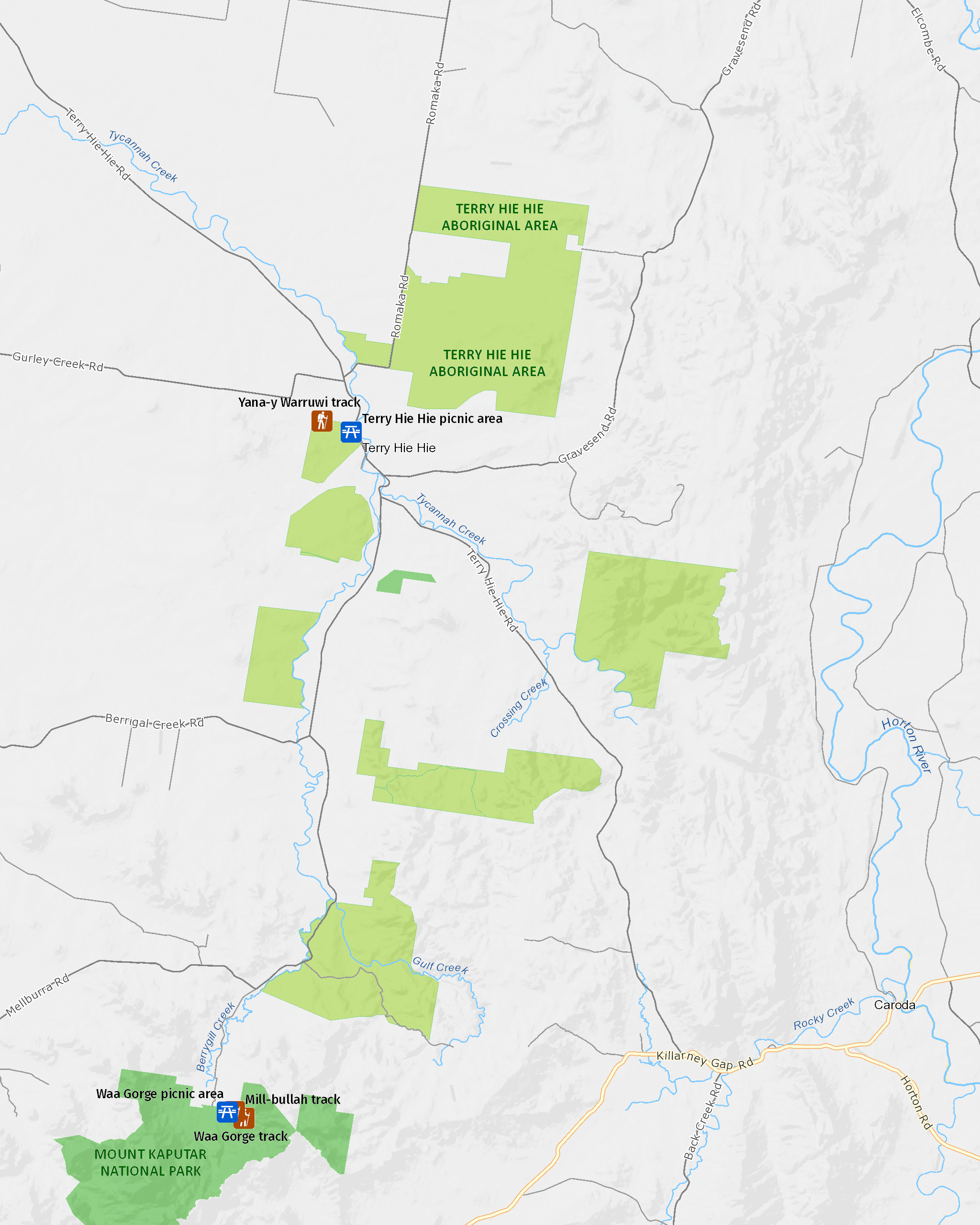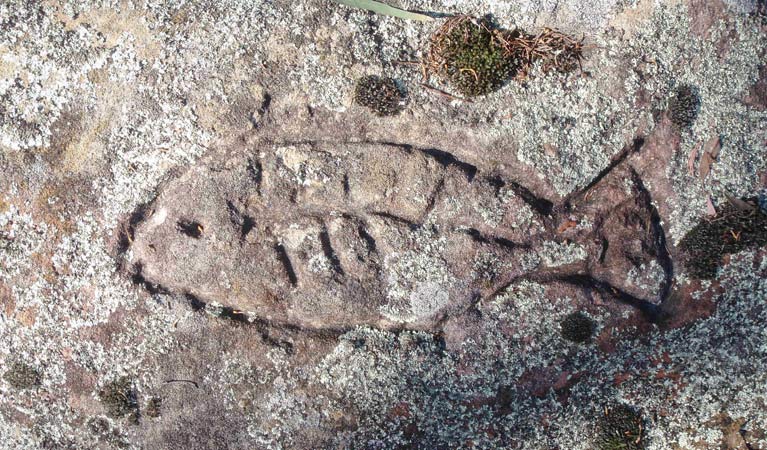Terry Hie Hie Aboriginal Area
Overview
Terry Hie Hie Aboriginal Area features six significant cultural reserves, with places to picnic, opportunities for birdwatching, and a beautiful walking track.
Read more about Terry Hie Hie Aboriginal Area
Created in 2005, Terry Hie Hie Aboriginal Area was once an important ceremonial and gathering place for the Gamilaroi, Kamilaroi, Gamilaraay or Gomeroi People. Today it’s a tranquil spot, scattered in sections around the small town, which is also called Terry Hie Hie.
Evidence of long-term use of the area includes at least 240 axe-grinding grooves and the remains of a corroboree ground. A bora, several carved trees, scarred trees, and two Aboriginal cemeteries can also be found nearby. The local community and descendants of traditional custodains often visit for cultural, recreational and educational purposes.
Terry Hie Hie Aboriginal Area is home to a staggering variety of native wildlife, including woodland birds, mammals, and reptiles. These can often be seen in lush communities of cypress pine and silver leaf ironbark woodland.
Take an opportunity to wander through the forest, soaking up the ambiance, cultural significance, and natural splendour of a place that has been appreciated and admired by people for hundreds of years.
Terry Hie Hie Aboriginal Area also has an innovative educational program that provides teachers and students a rare opportunity to learn about the language, history and culture of the Gamilaroi, Kamilaroi, Gamilaraay or Gomeroi People.
Local alerts
For the latest updates on fires, closures and other alerts in this area, see https://www.nationalparks.nsw.gov.au/visit-a-park/parks/terry-hie-hie-aboriginal-area/local-alerts
Contact
- in the Country NSW region
Terry Hie Hie Aboriginal Area is always open but may have to close at times due to poor weather or fire danger.
-
-
Narrabri office
02 6792 7300
Contact hours: Monday to Friday, 8.30am to 4.30pm. - Level 1, 100 Maitland Street, Narrabri NSW 2390. Accessible via Dewhurst Street.
-
Email: npws.barwon@environment.nsw.gov.au
-
Narrabri office
Visitor info
All the practical information you need to know about Terry Hie Hie Aboriginal Area.
Map

Map legend

Maps and downloads
Nearby towns
Moree (50 km)
Join a Heritage and Art Deco Guided Walk to uncover Moree's outstanding collection of period architecture. Wander along the main street of Moree which showcases heritage-listed buildings influenced by American, Egyptian, Greek and Spanish design practices.
Narrabri (98 km)
Explore Pilliga Forest to see salt caves, native flora and fauna, and bore baths, or enjoy camping and bushwalking in Mt Kaputar National Park. Mt Kaputar's summit offers magnificent panoramic views, and there's excellent cabin accommodation within the park.
Bingara (153 km)
Bingara is situated on the beautiful Gwydir River in the Gwydir River Valley and is home to the 1930s Art Deco Roxy Theatre and the refurbished Roxy (Greek) Cafe. This historic former goldmining town is popular today with anglers and fossickers.
Learn more
Terry Hie Hie Aboriginal Area is a special place. Here are just some of the reasons why:
A living link between generations

Traditional Gamilaraay Aboriginal People once used the lands around Terry Hie Hie for significant ceremonial events. The Aboriginal area encompasses a corroboree ground and at least 240 axe-grinding grooves that have been around for generations. European farmers entered the area in the 1830s, but after some early skirmishes, the Aboriginal people remained on for many decades, maintaining a good relationship with John Cory, who ran a cattle station in the area. A campground for the Gamilaraay was established as an Aboriginal Reserve in 1895, but by the 1940s all occupants had left. Today, Terry Hie Hie Aboriginal Area forms a tangible link between the Gamilaraay ancestors and their living descendants.
A unique partnership

Terry Hie Hie Aboriginal Area Co-management Committee was formed in 2008 to work in partnership with NPWS to help guide management of the reserve and encourage connection with country. This committee consists of Aboriginal community members who represent Gamilaraay families with a historical connection to the area.
An endangered ecological community

Unsurprisingly, bird watching is superb here, so don’t forget to pack a pair of binoculars to try and spot the many unusual species flying around. Terry Hie Hie Aboriginal Area is home to rich birdlife, including the speckled warbler, little lorikeet, glossy black cockatoo, and masked owl. You might also catch a glimpse of some native wildlife with koalas and wallabies also calling the area home.
Education resources (1)
What we're doing
Terry Hie Hie Aboriginal Area has management strategies in place to protect and conserve the values of this park. View the detailed park and fire management documents.
General enquiries
- National Parks Contact Centre
- 7am to 7pm daily
- 1300 072 757 (13000 PARKS) for the cost of a local call within Australia excluding mobiles
- parks.info@environment.nsw.gov.au
Contact
- in the Country NSW region
Terry Hie Hie Aboriginal Area is always open but may have to close at times due to poor weather or fire danger.
-
-
Narrabri office
02 6792 7300
Contact hours: Monday to Friday, 8.30am to 4.30pm. - Level 1, 100 Maitland Street, Narrabri NSW 2390. Accessible via Dewhurst Street.
-
Email: npws.barwon@environment.nsw.gov.au
-
Narrabri office

